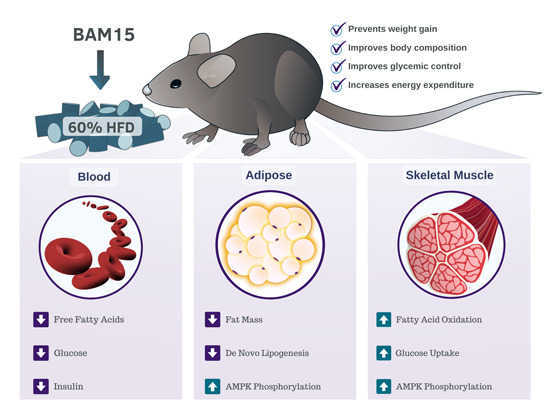Interesting news on a compound called BAM15, being tested in mice:
BAM15 works by making the mitochondria, the power plants of the cell, less efficient. The result is that the mitochondria burn more energy. The researchers are reluctant to describe BAM15 as a miracle drug. More research will be needed to determine its effectiveness for people.
A recently discovered chemical compound helped elderly mice with obesity lose fat and weight, add muscle and strength, reduce age-related inflammation and increase physical activity, a new study shows.
The study, published in the Journal of Cachexia, Sarcopenia and Muscle, provides the first evidence that BAM15, a mitochondrial uncoupler, prevents sarcopenic obesity, or age-related muscle loss accompanied by an increase in fat tissue.
“Loss of muscle mass is typically not a concern in younger adults with obesity. However, as people age, that changes. Older adults with sarcopenic obesity suffer accelerated muscle loss. They become less active. As a result, they are at high risk for falls, stroke, heart disease, poorer quality of life and premature death,” said Christopher Axelrod, MS, Director of Pennington Biomedical Research Center’s Integrated Physiology and Molecular Medicine Laboratory.
Mitochondrial uncoupling makes mitochondria, the power plants of the cell, less efficient. As a result, the mitochondria burn more energy. Elderly mice given BAM15 lost fat, gained muscle and strength, and increased physical activity.

Related Stories:
Research Papers:
BAM15-mediated mitochondrial uncoupling protects against obesity and improves glycemic control
